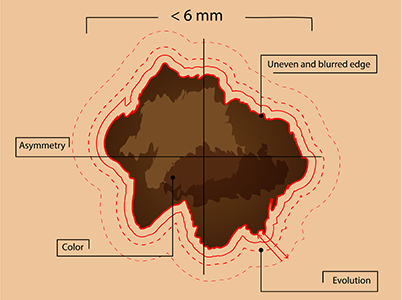Melanoma


Melanoma commonly occurs within a pre-existing mole, in one third of cases. In the other two thirds of cases the melanoma appears in normal skin.
Melanoma can arise anywhere on the skin, and the area of most frequent occurrence for men is in the upper back and shoulders, as well as the trunk. In women melanomas occur most frequently on the legs.
Though rare, melanoma can also occur in other areas such as mucosal skin, genital skin, the nail matrix, and at the back of the eye.
Melanoma Risk Factors
There are several risk factors for developing melanoma. These include: a large number of moles (more than 100) on the body, a history of significant UV exposure, a significant history of sunburn, a family history of melanoma, previous personal cases of melanoma, a tendency to freckle, tan poorly and sunburn, blonde or red hair, and blue or green eyes. Males over the age of 50 have the greatest risk of developing melanoma.
Clinical Features of Melanoma
Early clinical features of recognising melanoma include a change in colour, shape or size of a mole, and occasionally include persistent itching of a lesion. Later clinical features include tenderness and/or bleeding and ulceration. The chances of treating a melanoma successfully depend on how quickly the melanoma is diagnosed. The sooner the better.
Mole Checking
We recommend having your moles checked by a dermatologist, regularly. A full skin check with mole mapping is ideal. We encourage you to make an appointment for your family and yourself to get your moles checked today.
